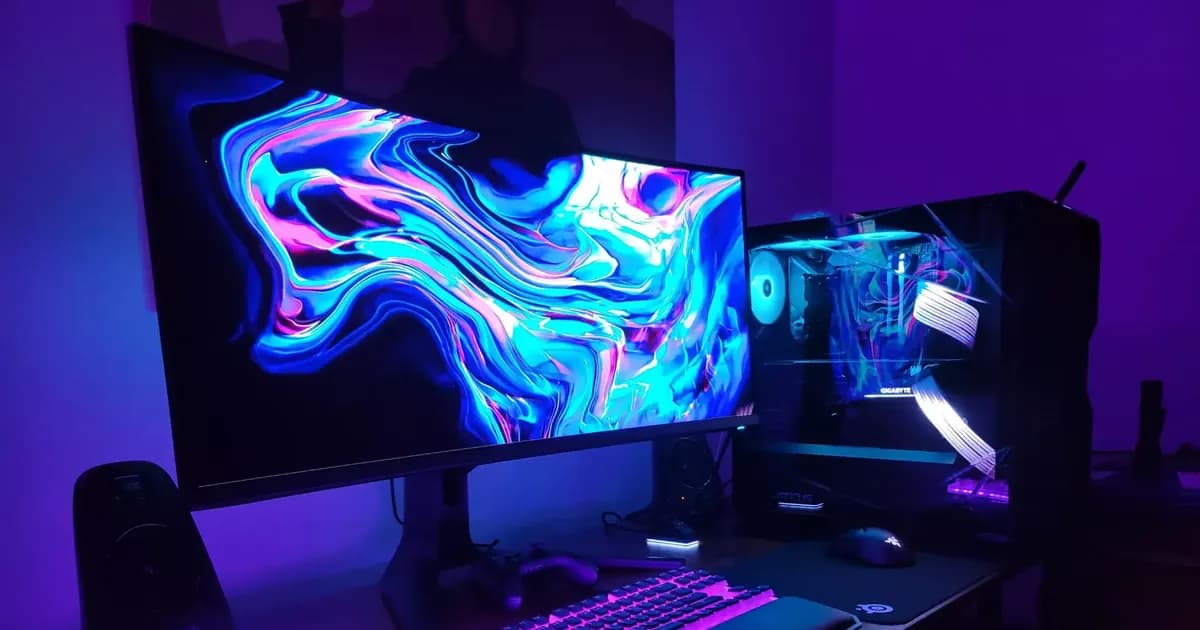Table of Contents
Selecting the right gaming monitor in 2025 is crucial for an optimal PC or console setup. From resolution and refresh rate to HDR support and panel type, each element plays a key role in your overall experience. This guide focuses on how to choose the best gaming monitor for your needs, as well as providing additional considerations and tips.

Key Factors to Consider When Purchasing a Gaming Monitor
1. Resolution

2. Screen Size and Form Factor
- 24–27 inches works well for FHD (1920×1080)
- 27–32 inches is popular for QHD (2560×1440)
- 32 inches or larger typically offers the best 4K (3840×2160) experience
3. Refresh Rate

4. Response Time

5. Panel Types
- TN (Twisted Nematic) Panels: Known for fast response times and relatively low production costs. However, they often have narrower viewing angles and less vibrant color reproduction than IPS or VA. TN is still favored among budget buyers and competitive gamers who prioritize speed over color accuracy.
- IPS (In-Plane Switching) Panels: Praised for wide viewing angles and excellent color accuracy. Modern IPS displays have closed the gap on response times, making them suitable for both color-sensitive work and gaming. If you're looking for a balance between performance and visual fidelity, IPS is often a strong contender for a gaming monitor.
- VA (Vertical Alignment) Panels: Characterized by high contrast ratios and deeper black levels, VA panels excel in delivering striking visuals, especially in dark game environments. However, some VA models exhibit slower response times compared to TN or IPS. This may not be noticeable in many games, but fast-paced e-sports titles might still favor IPS or TN.
6. Brightness and HDR
7. G-Sync, FreeSync, VRR, and Other Sync Technologies

8. Curved vs. Flat Monitors

9. Additional Features and Ports
Gaming Monitor Recommendations for 2025
1. Best Value Picks

- Acer Nitro XZ27H
27-inch, FHD resolution, 165Hz refresh rate, FreeSync support.
Balances affordability with a high refresh rate, making it an appealing choice for students or budget-conscious gamers seeking smooth gameplay. - LG UltraGear 25GN25
25-inch, FHD resolution, 240Hz IPS panel.
While it's limited to 1080p, the impressive 240Hz refresh rate and quick IPS response times are ideal for fast-paced shooters and action titles.
2. High-Resolution Immersion

- Samsung Odyssey Neo G8X
32-inch curved VA panel, 4K resolution, 240Hz, HDR1000.
Combines high resolution and an exceptional refresh rate, ideal for immersive single-player adventures or visually demanding titles. VRR compatibility with next-gen consoles is a bonus for those who switch between PC and console gaming. - ASUS ROG Swift PG32XQ
32-inch IPS panel, 4K resolution, 144Hz (overclockable to 160Hz), G-Sync Ultimate.
Known for wide viewing angles, accurate colors, and a strong feature set. Especially well-suited for gamers who also engage in color-sensitive tasks like video editing.
3. Ultra-Wide/Curved Picks

- LG UltraWide Curved 35WN950
35-inch ultra-wide (21:9), 3440×1440, 180Hz, Nano IPS.
Offers cinematic immersion for open-world games and is also great for productivity, thanks to its wide aspect ratio. - GIGABYTE Aorus CV38Q
38-inch, 3840×1600 resolution, 144Hz, FreeSync Premium Pro, HDR600.
A step up in vertical space from traditional 3440×1440 ultra-wides, offering a spacious screen that can handle both intense gaming and professional applications.
4. Esports/High-End Competitive Picks

- BenQ ZOWIE XL2875K
28-inch, FHD resolution, 360Hz refresh rate, DyAc+ technology.
Built to meet the highest standards of pro-level gamers, focusing on minimal input lag and motion blur for a competitive edge. - Alienware AW2525H
25-inch, FHD resolution, 360Hz IPS, G-Sync.
Delivers lightning-fast response times, vibrant color reproduction, and synergy with NVIDIA-based systems. A mainstay for dedicated FPS or MOBA enthusiasts.
5. Console Gamers

- Sony Inzone G32
32-inch, 4K resolution, 120Hz, HDMI 2.1 support.
Offers a perfect pairing with PS5 or Xbox Series X, with HDR10+ to elevate graphical fidelity in console titles. - Philips Momentum 32M2X
32-inch, 4K, 144Hz, AMD FreeSync, VRR support.
Provides a well-rounded feature set for both PC and console gaming, combining crisp visuals with strong performance for modern games.
6. Work and Entertainment Combo

- Dell UltraSharp U27GQ
27-inch, QHD resolution, 165Hz, IPS panel.
Ideal for those who need accurate color reproduction for design, video editing, or photography, while still offering a refresh rate that suits more casual gaming. - HP Omen 27i G2
27-inch, QHD, 180Hz, HDR400, G-Sync Compatible.
Balances creative tasks with gaming performance, featuring vibrant colors and fluid motion for a range of applications.